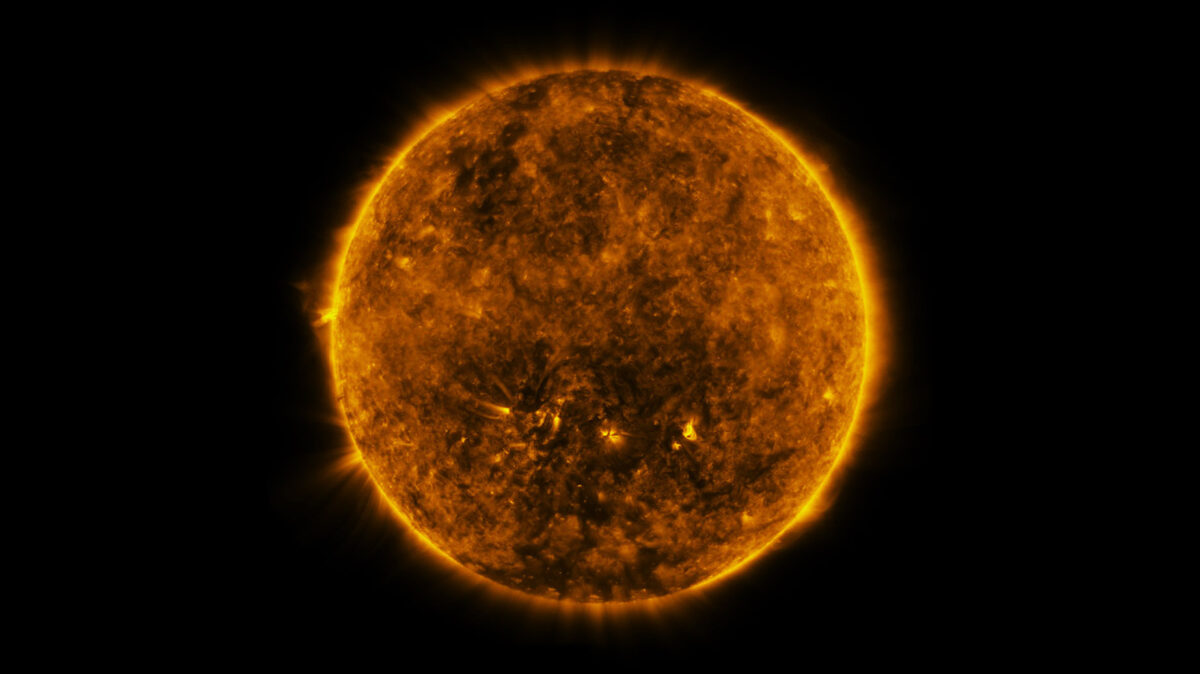Solar Cruiser, NASA's large solar sail test
Highlights
- Solar Cruiser was a proposed NASA mission to test a large solar sail at an artificial orbit between the Earth and Sun.
- Solar Cruiser’s sail would have been the largest ever tested in space, covering an area of more than six tennis courts.
- NASA canceled the mission in 2022 after a review deemed it unrealistic within its proposed budget.
What are solar sails?
Solar sails are spacecraft that use large, thin sails to reflect sunlight, giving them a gentle push and unlimited fuel. They can reach unique destinations that are difficult or impossible to access with traditional rockets, and may be our best option for visiting other star systems.
Solar sails are particularly well-suited to small, low-cost spacecraft limited by a lack of propulsion options. Thanks to advances in technology miniaturization these spacecraft have grown in capabilities, just as solar sails have advanced over the years. Japan’s IKAROS successfully changed its orbit around the Sun in 2010, and The Planetary Society’s LightSail 2 demonstrated flight by light in Earth orbit in 2019. NASA’s NEA Scout launches to lunar orbit in 2022, where it will use a solar sail to fly onward to a near-Earth asteroid.
What would Solar Cruiser have done?
Solar Cruiser aimed to build on that legacy by deploying a sail with an area of 1,650 square meters (17,800 square feet), big enough to cover more than six tennis courts. It would have orbited an artificial spot between the Earth and the Sun that could be used for solar science or to provide advance warning of solar storms that damage satellites and disrupt power grids on Earth.
By demonstrating the feasibility of large solar sails, Solar Cruiser aimed to pave the way for even more ambitious missions. The spacecraft would have also changed the angle of its orbit, showing how a similar mission could hover high above the Sun’s poles, continuously monitoring them in a way that could revolutionize solar physics.
What happened to Solar Cruiser?
Solar Cruiser was canceled by NASA in 2022. NASA’s Science Mission Directorate Program Management Council met on June 28, 2022, to evaluate whether the Solar Cruiser project was ready to proceed to the next phase, in which the spacecraft would have been built. The Council determined that the project had not demonstrated an ability to meet its launch readiness date and stay within the established cost requirements. As a result, the project was not confirmed, meaning it would not move forward. Although the Solar Cruiser mission was canceled, it still contributed to the development and advancement of several key technologies, including the successful demonstration of a full quadrant sail deployment.

How Solar Cruiser would have worked
Solar Cruiser planned to hitch a ride to space in 2025 with NASA’s Interstellar Mapping and Acceleration Probe, IMAP. IMAP will study how the constant flow of charged particles coming from our Sun known as the solar wind interacts with cosmic radiation coming from the rest of the universe. This interaction creates a bubble that surrounds and protects our solar system.
Solar Cruiser would have coasted with IMAP and another small satellite towards Lagrange point 1, or L1, a location where Earth and the Sun’s gravity balance to create a place for spacecraft to orbit. L1 lies along the Earth-Sun line about 1.5 million kilometers (0.9 million miles) from Earth. Solar Cruiser would fly beyond L1 and use a solar sail to make its own artificial orbit closer to the Sun, but still on a straight line between the Sun and Earth as Earth revolves around the Sun. Only a solar sail can provide the forces necessary to maintain such an otherwise unstable orbit, since doing so requires constant fuel.
Solar Cruiser would have then used its sail to slowly change the angle of its orbit. The spacecraft would have also tested out a number of supplemental solar sailing technologies, including lightweight solar panels built into the sail structure. The sail would also use LCD panels that could be turned on and off to change the direction of thrust gained from solar sailing.
Support missions like Solar Cruiser
Whether it's advocating, teaching, inspiring, or learning, you can do something for space, right now. Let's get to work.


 Explore Worlds
Explore Worlds Find Life
Find Life Defend Earth
Defend Earth



